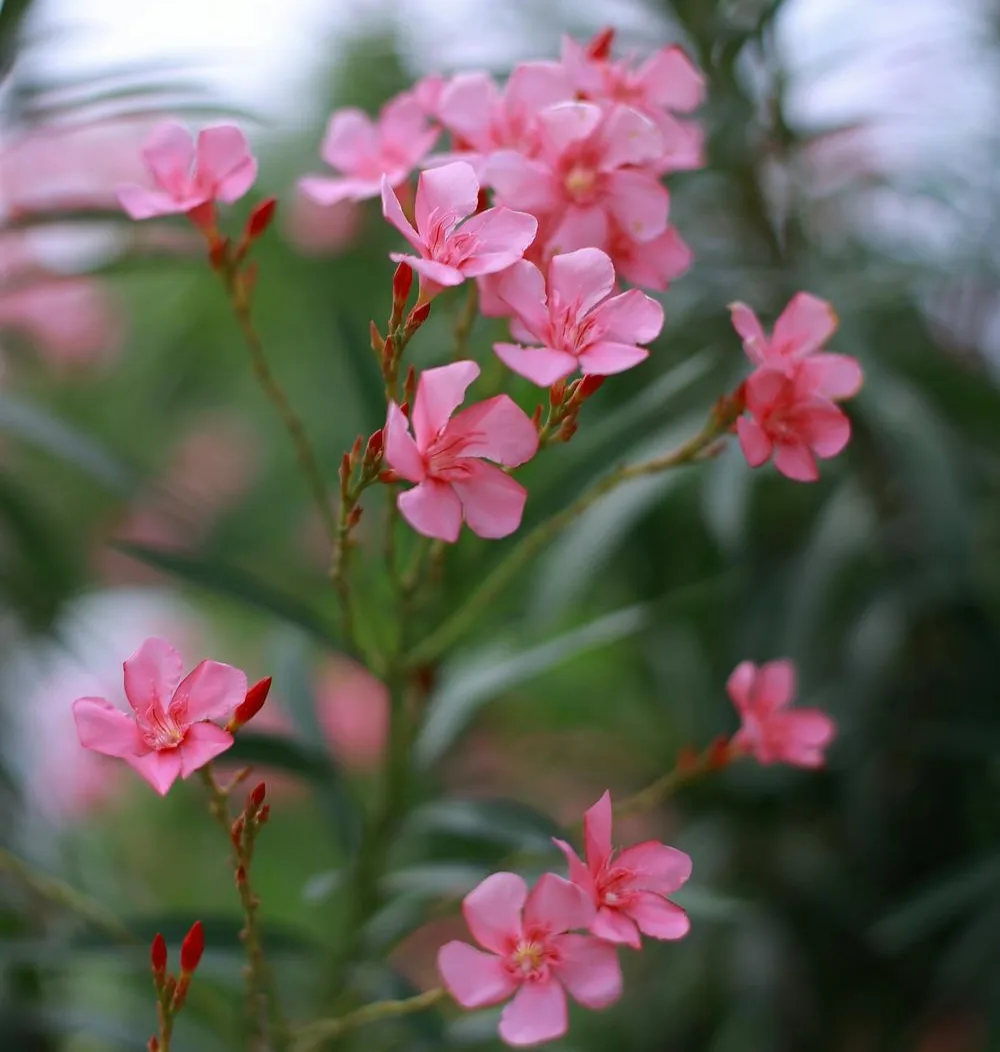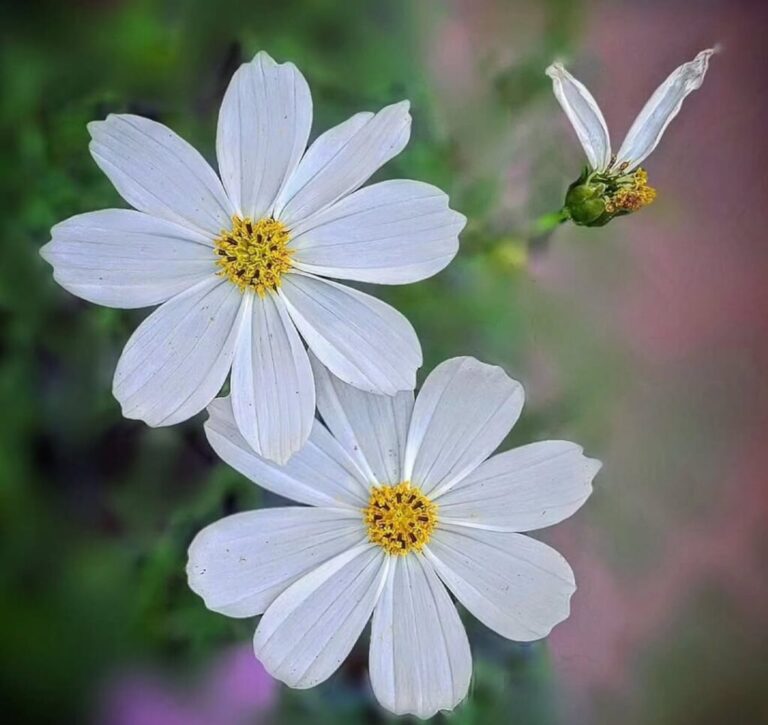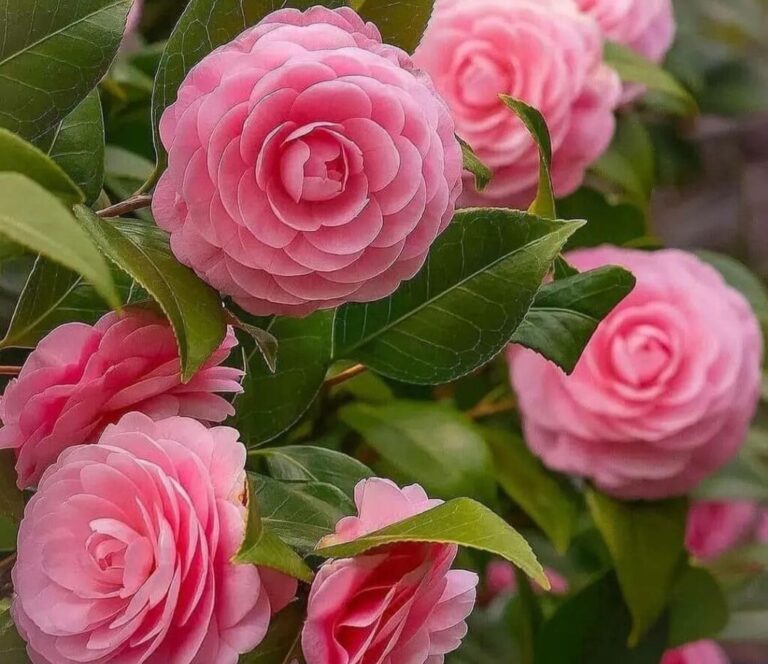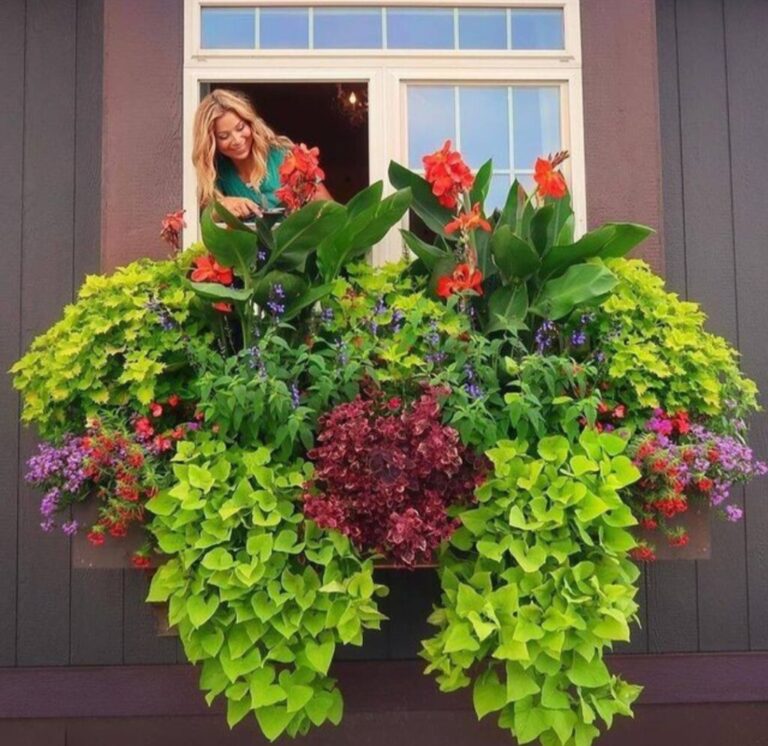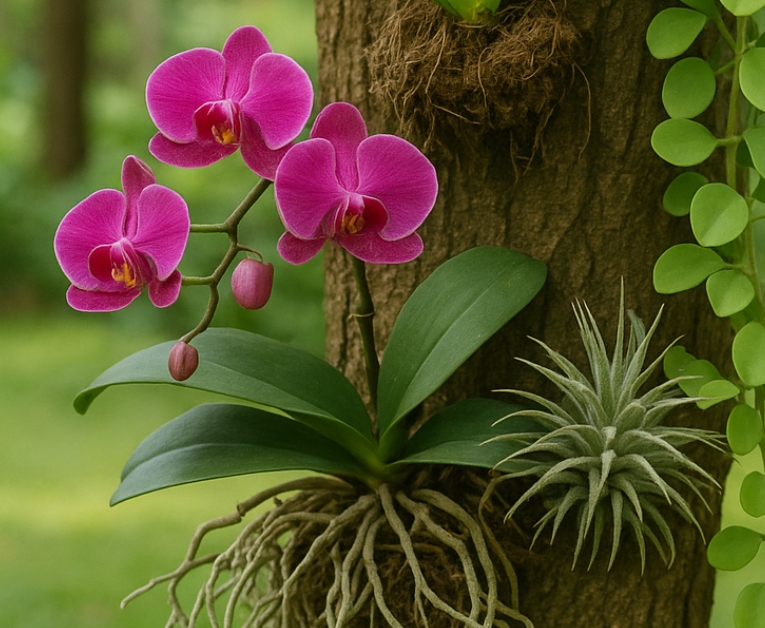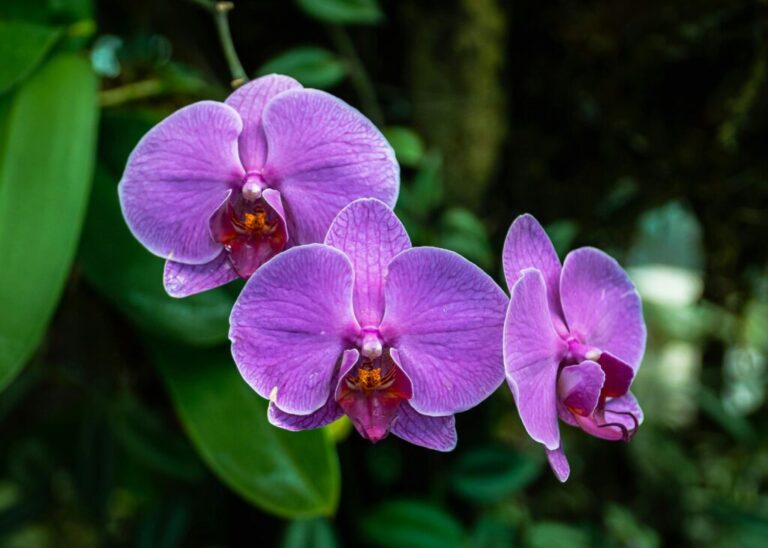- 1 Here are some popular oleander varieties:
- 2 PLANTING OLEANDER Plant
- 3 SOIL REQUIREMENTS
- 4 Oleander water requirements in the summer
- 5 Design ideas and landscape
- 6 Propagating
- 7 Over-wintering care
- 8 Oleander is a toxic plant. How to save pets and children
- 9 Managing Oleander Pests and Diseases
- 10 OLEANDER CARE AND MAINTENANCE
- 11 FAQs on Oleander Plant
Oleander Plant among the blooms of the botanical world, the oleander stands out with its mesmerising flowers and verdant leaves. However, its allure is accompanied by a cautionary note: oleander’s toxicity poses a risk to both humans and animals. In this guide, we delve into a systematic ten-step approach to nurturing and safeguarding this bewitching plant, allowing enthusiasts to cultivate its beauty while respecting its potent toxicity.
Oleander plant scientifically known as Nerium oleander, is a resilient shrub native to the Mediterranean region. With its upright bushy habit and the potential to reach heights of 4 to 20 feet tall, oleander plant makes a striking addition to any landscape. Its slender olive-like green leaves and prolific clusters of funnel-shaped flowers, which bloom nearly year-round in hues of pink, white, red, coral, purple, or yellow, provide visual interest and elegance.

.
Here are some popular oleander varieties:
Mathilde Ferrier: This variety features yellow blooms and adds a unique colour to the oleander spectrum.
Madame Butterfly is renowned for its double blooms, which resemble delicate butterflies.
Hardy Red: A cold-hardy variety with vibrant red flowers.
Petite Pink: compact and adorned with lovely pink flowers, perfect for smaller gardens or containers.
White Sands: A classic white-flowering variety that adds elegance to any landscape.
Variegata is characterised by its variegated foliage, adding visual interest even when not in bloom.
Lavender Swirl: Featuring delicate lavender flowers with a hint of white, it creates a charming pastel display.
These varieties offer a range of colours, sizes, and characteristics, allowing you to choose the perfect oleander for your garden or landscape design.
PLANTING OLEANDER Plant
When it comes to planting oleander, selecting the right location is crucial for its growth and well-being. Oleanders plant thrive in areas with full sun exposure, although they can tolerate some shade. Therefore, choose a site in your garden that receives ample sunlight throughout the day. Additionally, ensure that the soil has good drainage to prevent waterlogging, as oleanders plant prefer well-draining soil.
Whether you’re planting oleander in your backyard garden, along a property border, or as part of a larger landscaping project, consider its mature size and spacing requirements. Depending on the variety, oleanders can reach heights ranging from 4 to 20 feet tall, so give them ample space to grow and spread their branches. Proper spacing, typically 4 to 12 feet apart, allows for optimal air circulation and prevents overcrowding.
Before planting, prepare the soil by amending it with compost or other organic matter to improve its fertility and texture. Dig a hole that is two to three times wider and slightly deeper than the root ball of the oleander plant. Gently loosen the roots if they are pot-bound, then place the plant in the hole so that the top of the root ball is level with the surrounding soil. Backfill the hole with soil, gently tamp it down to remove air pockets, and water the newly planted oleander thoroughly.
By choosing the right location and providing proper care during planting, you can ensure that your oleander thrives and becomes a beautiful focal point in your garden or landscape.
SOIL REQUIREMENTS
Oleanders plants are adaptable shrubs that can tolerate a variety of soil conditions, but they thrive best in well-draining soil with a neutral pH. When preparing the planting site for your oleander plant it’s essential to consider the soil’s texture, drainage, and fertility.
Texture: Oleanders plant prefer soil with a loamy texture, which provides a balanced mix of sand, silt, and clay. Loamy soil offers good drainage while retaining sufficient moisture and nutrients for healthy plant growth.
Drainage: Proper drainage is crucial for oleanders, as they are susceptible to root rot in waterlogged soil. Avoid planting oleanders in areas prone to standing water or heavy clay soil that retains moisture for extended periods. If you have poorly draining soil, consider amending it with organic matter, such as compost or peat moss, to improve drainage and soil structure.
pH Level: Oleanders thrive in soil with a slightly acidic to slightly alkaline pH level ranging from 6.5 to 7.5. Test the pH of your soil using a soil testing kit, and amend it if necessary to achieve the optimal pH range for oleander growth. Adding lime to acidic soil or sulphur to alkaline soil can help adjust the pH level and create a more suitable environment for oleanders.
Fertility: While oleanders can tolerate poor soil conditions, incorporating organic matter into the planting site can enhance soil fertility and provide essential nutrients for plant growth. Mix compost, aged manure, or other organic amendments into the soil before planting to enrich it and support healthy root development.
By selecting a planting site with well-draining, loamy soil and ensuring proper soil preparation, you can create an ideal growing environment for oleanders. Paying attention to soil texture, drainage, pH level, and fertility will promote robust growth and vibrant flowering in your oleander shrubs.
Oleander water requirements in the summer
Oleanders are drought-tolerant once established, but they do require regular watering, especially during their initial establishment period. Generally, they need about 1 to 2 inches of water per week, either from rainfall or irrigation. To avoid waterlogging, which can cause root rot, make sure the soil drains properly. They might need to be watered more frequently in warmer or drier conditions.
Design ideas and landscape
Here are some design ideas and landscaping suggestions for incorporating oleanders into your outdoor space:
Border Planting: Use medium and large varieties of oleander to create a lush border along property lines or garden beds. Their dense foliage and colourful blooms provide privacy, screening, and a beautiful backdrop for other plants in the landscape.
Slope Stabilisation: Mass planting of oleanders along slopes or hillsides not only adds visual interest but also helps control erosion. Their deep root systems anchor the soil, preventing runoff and soil loss during heavy rain.
Container Gardening: Opt for smaller varieties of oleander to plant in containers on patios, decks, or balconies. Their compact size makes them perfect for adding vertical interest and colour to small outdoor spaces. Just ensure the containers have adequate drainage and are placed in full sun.
Focal Points: Select a medium or large variety of oleander and plant it as a focal point in your landscape design. Whether as a standalone specimen or part of a mixed planting scheme, a well-placed oleander can draw the eye and create visual interest.
Mass Planting: Create a stunning display by mass planting oleanders in large groups. This approach works well in open areas or along property boundaries, where their uniform growth habit and profusion of blooms can make a bold statement.
Foundation Plantings: Soften the harsh lines of your home’s foundation by planting a row of oleanders along the front or sides of the house. Their evergreen foliage and year-round blooms provide year-round interest and curb appeal.
Mixed Borders: Combine oleanders with other shrubs, perennials, and annuals with similar cultural requirements to create dynamic mixed borders. Choose plants that complement oleanders’ colours and textures for a cohesive and visually appealing landscape.
Island Beds: Plant a cluster of oleanders in an island bed in the middle of a lawn or garden. This creates a focal point that adds structure and interest to the landscape while also providing habitat for pollinators and wildlife.
By incorporating these design ideas into your landscaping, you can maximise the beauty and versatility of oleanders while creating a vibrant and inviting outdoor space. Whether you’re aiming for privacy, erosion control, or simply adding colour and interest to your garden, oleanders offer endless possibilities for creative landscape design.
Propagating
Propagating oleanders plant can be done through several methods, including:
Seeds:Gather seed from fully developed oleander pods and plant in a potting mix that drains well. A warm, sunny spot should be chosen for the pot, and the soil should be kept continuously moist. Please be patient, since germination might take several weeks or even months. Transplant the seedlings into individual pots or straight into the garden once they are large enough.
Cuttings: Take 6- to 8-inch stem cuttings from a healthy oleander plant during the spring or early summer. Remove the lower leaves from the cutting, dip the cut end in rooting hormone, and plant it in a pot filled with a mix of perlite and peat moss. Keep the cutting in a warm, humid environment with indirect light, and mist it regularly to maintain moisture levels. Roots should develop within a few weeks to a few months, at which point you can transplant the cutting into a larger pot or the garden.
Layering: Layering involves bending a low-growing branch of an oleander plant to the ground and burying a portion of it in soil while keeping the tip exposed. Secure the buried portion with a U-shaped stake or a small rock. After a few months, roots will develop from the buried section. Once roots have formed, cut the rooted portion from the parent plant and transplant it to its desired location.
Division: Divide mature oleander plants by carefully digging up the root ball and separating it into smaller sections, each with its own set of roots and shoots. Replant the divisions in pots or directly in the garden, ensuring they receive adequate water and sunlight to establish themselves.
Regardless of the method you choose, propagating oleanders requires patience and attention to detail. It’s essential to provide the right growing conditions, including proper soil, water, and light levels, to ensure the success of your propagation efforts. Additionally, remember that oleanders are toxic plants, so handle them with care and keep them out of reach of children and pets.
Over-wintering care
Overwintering care for oleanders is essential, especially in regions where temperatures drop below their tolerance levels. Here are some tips to help you properly care for oleanders during the winter months:
Choose Suitable Varieties: If you live in a colder climate, consider planting cold-hardy varieties of oleander or growing them in containers that can be brought indoors during the winter.
Mulch: Apply a thick layer of mulch around the base of oleander plants to insulate the roots and protect them from freezing temperatures. Use organic mulch such as straw, wood chips, or shredded leaves, and spread it evenly to cover the root zone.
Watering: While oleanders are drought-tolerant plants, it’s essential to keep them adequately watered during dry winter periods. Water deeply but infrequently to ensure the soil remains moist but not waterlogged. Avoid overhead watering, as wet foliage can increase the risk of frost damage.
Pruning: Wait until after the danger of frost has passed before pruning oleanders in late winter or early spring. Remove any dead, damaged, or diseased branches, as well as any growth that appears weak or leggy. Pruning helps improve air circulation and promotes healthy growth in the upcoming growing season.
Protection from Frost: If frost is forecasted, cover oleander plants with frost blankets, burlap, or old bedsheets to provide extra protection. Remove the covers during the day to allow sunlight to reach the plants and prevent overheating.
Potted Oleanders: If you’re growing oleanders in containers, bring them indoors before the first frost and place them in a cool, well-lit location such as a garage or basement. Water sparingly during the winter months, as container plants require less water when they are dormant.
Monitoring for Pests and Diseases: Keep an eye out for signs of pests and diseases, such as aphids, scale insects, or fungal infections, which may become more prevalent during the winter months. Treat any infestations promptly, using organic or chemical controls as needed.
By following these overwintering care tips, you can help ensure that your oleanders survive the winter months and thrive when warmer weather returns. Proper protection and maintenance during the colder months will help your oleanders continue to provide beauty and enjoyment in your garden for years to come.
Oleander is a toxic plant. How to save pets and children
To protect pets and children from the toxicity of oleander plants, follow these precautions:
Education: Teach children and pet owners about the dangers of oleander ingestion. Make sure they understand not to touch or consume any part of the plant.
Supervision: Keep a close eye on children and pets when they are playing outdoors, especially in areas where oleander plants are present.
Fencing: Erect a barrier or fence around oleander plants to prevent pets and children from accessing them.
Training: Train pets to avoid eating plants and discourage children from picking or playing with them.
Proper disposal: Remove fallen leaves, flowers, and trimmings from the ground promptly to prevent accidental ingestion.
Gloves: Wear gloves when handling oleander plants, and wash hands thoroughly afterward.
Emergency contact: Keep the contact information for poison control and your veterinarian readily available in case of accidental ingestion.
Managing Oleander Pests and Diseases
Oleanders are prone to various pests such as aphids, scale insects, and spider mites, along with diseases like oleander leaf scorch and fungal leaf spot. Here’s how you can address these issues:
Pest Control: Utilise insecticidal soap or neem oil for aphids and spider mites. Scale insects can be manually removed or treated with horticultural oil. It’s crucial to conduct routine examinations and provide timely care.
Disease Management: Trim infected parts, ensuring proper disposal. Avoid overhead watering to prevent fungal diseases. Apply oleander-specific fungicides if needed, adhering to instructions closely.
Cultural Care: Plant in well-draining soil with adequate sunlight, avoiding overwatering. Regular pruning enhances air circulation, reducing disease risk.
Resistant Varieties: Opt for disease-resistant oleander species when possible.
Consultation: For persistent issues, seek advice from local horticulturists or extension services tailored to your region.
Caterpillar Control for Oleanders
If caterpillars are damaging your oleander, consider these methods:
Handpicking: Remove caterpillars manually for small infestations.
Natural predators: attract birds, ladybirds, and lacewings to control caterpillar populations.
Biological Control: Apply Bacillus thuringiensis (Bt) as a spray, following label instructions.
Horticultural Oil or Insecticidal Soap: Safely suffocate caterpillars, avoiding harm to beneficial insects.
Barrier Methods: Use covers or netting to block caterpillar access.
Pruning: Trim heavily infested parts and dispose of them properly.
Consultation: Seek guidance from gardening experts or extension services for severe or persistent infestations.
OLEANDER CARE AND MAINTENANCE
Oleander’s resilience extends to its care requirements. While it can thrive in challenging conditions such as drought, heat, and poor soil, regular watering and occasional fertilisation can promote optimal growth and flowering. Pruning, preferably in the fall after peak bloom, helps maintain shape and encourages new growth. However, it’s essential to handle oleander with care due to its toxicity, wear protective clothing and gloves during pruning, and avoid direct contact with sap.
FAQs on Oleander Plant
What is an Oleander Plant?
The Oleander Plant (Nerium oleander) is a fast-growing evergreen shrub known for its attractive, colorful flowers and tolerance to tough conditions.
How do you care for an Oleander Plant?
To care for an Oleander Plant:
Plant it in well-draining soil.
Water regularly but avoid overwatering.
Place it in full sun for best flowering.
Prune it annually to maintain its shape.
Can the Oleander Plant survive winter?
The Oleander Plant can survive mild winters in zones 8-10. In colder climates, it should be grown in pots and moved indoors during winter.
How often does the Oleander Plant bloom?
The Oleander Plant typically blooms from late spring to early fall, producing vibrant flowers in shades of pink, red, white, or yellow.
Can you propagate an Oleander Plant?
Yes, you can propagate an Oleander Plant through stem cuttings. Take 4-6 inch cuttings, remove lower leaves, and root them in water or soil.
Can I grow an Oleander Plant indoors?
While the Oleander Plant prefers outdoor conditions, it can be grown indoors in a sunny location. Ensure adequate light and good ventilation.
Is pruning necessary for the Oleander Plant?
Yes, pruning is necessary to remove dead or damaged branches, promote new growth, and shape the Oleander Plant. Prune after flowering.
